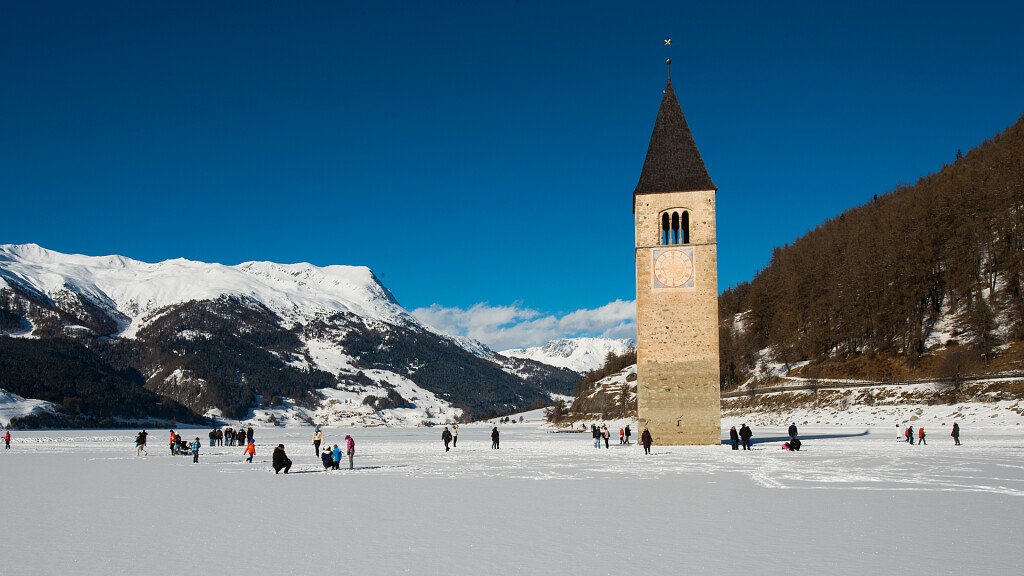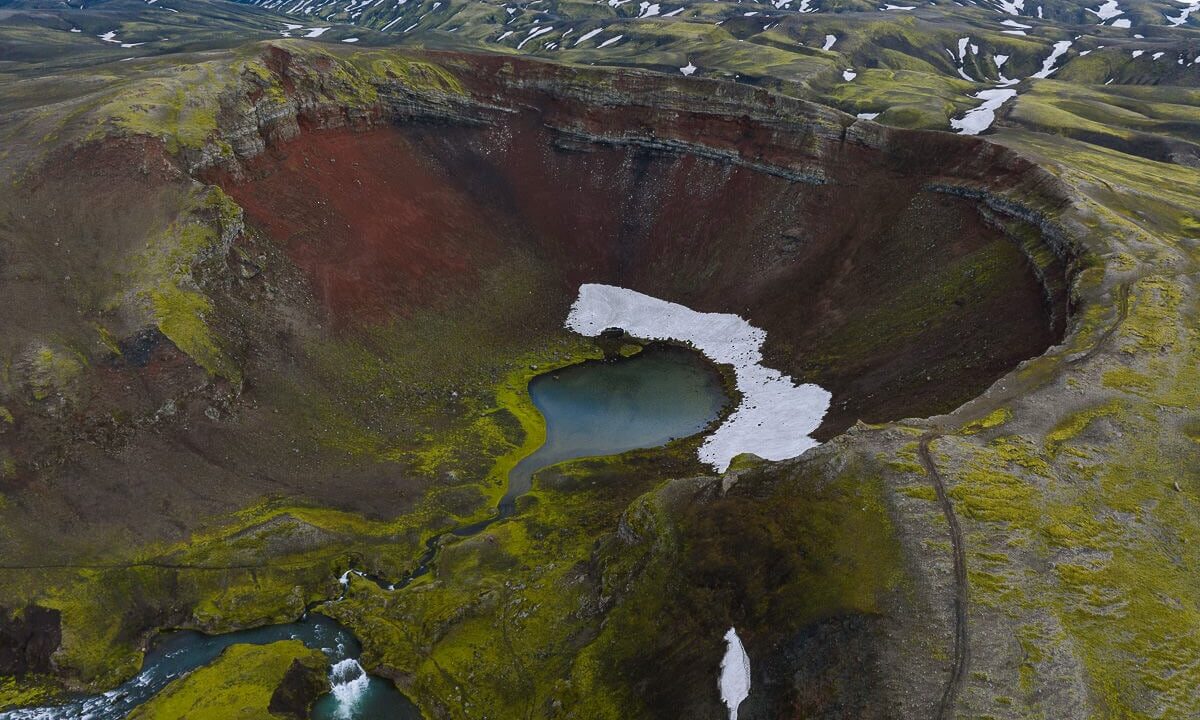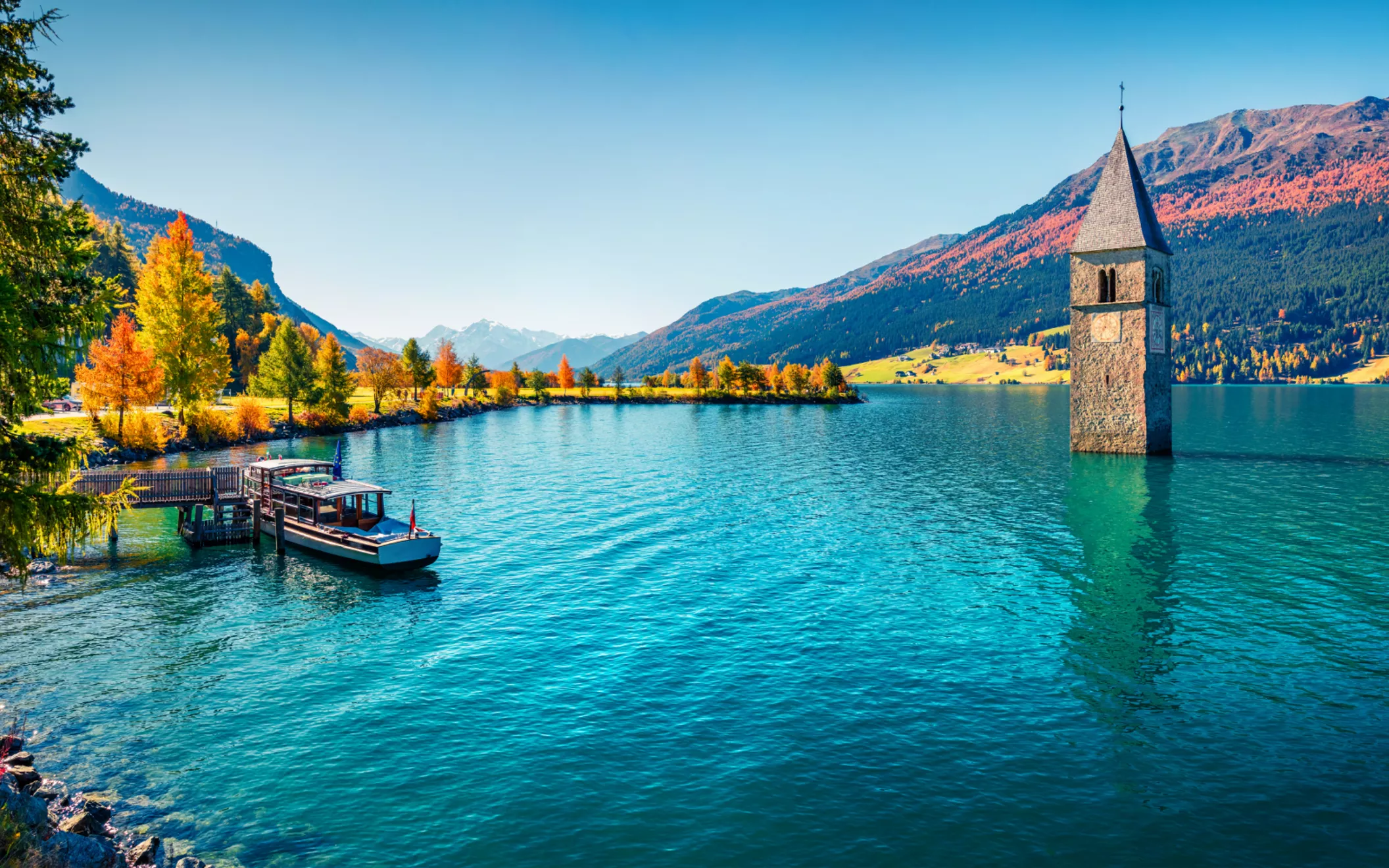Italy is known for its rich history, classical architecture, and breathtaking landscapes. Yet behind that beauty lies a fascinating story of sunken villages places that were once bustling with life but are now submerged, serving as silent witnesses to the passage of time. One of the most famous examples is Curon Venosta, located in the Trentino-Alto Adige region of northern Italy.
1. The Story of Curon Venosta
Curon Venosta (or Graun im Vinschgau in German) was a small village that sank in 1950 due to the construction of the Resia Dam (Reschensee). The dam was built to generate hydroelectric power, which forced the government at the time to flood the entire village and relocate hundreds of its residents.
ALSO SEE :
The Five Colored River of Colombia, A Breathtaking Natural Wonder
Today, the only structure still visible above the water’s surface is the 14th-century church bell tower, rising eerily from the middle of the lake. It stands as both a memorial to the lost village and an iconic landmark that attracts visitors from around the world.

2. From Tragedy to Tourist Attraction
Despite its tragic past, Curon Venosta has become a popular tourist destination. In summer, Lake Resia offers stunning views, with the lone bell tower reflecting serenely in the blue waters. During winter, the lake freezes over, allowing visitors to walk across the ice to get close to the tower.
Beyond its historical allure, the site also draws photographers and filmmakers. Notably, it inspired the 2020 Netflix series Curon, which blends legend and mystery around the submerged village.
3. The Story Behind the Dam
The Resia Dam project was undertaken by an Italian power company in the post–World War II era. When the plan was announced, locals strongly opposed it, unwilling to abandon homes that had stood for centuries. Nevertheless, the government went ahead, and as a result, over 160 homes and farmlands were submerged, forcing the villagers to rebuild their lives nearby.
Today, the remnants of the original village lie hidden beneath the lake’s surface unreachable yet preserved in the memories of its former residents and those who visit the site.
4. Other Sunken Villages in Italy
Curon Venosta is not the only submerged village in Italy. Several others met similar fates due to dam construction or environmental changes, including:
- Fabbriche di Careggine, a 13th-century stone village in Tuscany, submerged under Lake Vagli. Fascinatingly, it reemerges every few decades when the lake is drained for maintenance.
- Rocchetta Alta, an old village in Campania, which sank after an earthquake and changes to the river’s course in the 20th century.
ALSO SEE :
The Global Journey of Nasi Padang
5. Historical Legacy and Modern Reflection
The stories of Italy’s sunken villages are not just about lost homes they reflect the price of technological progress. At the same time, these places have become symbols of resilience and remembrance, reminding us that human advancement often leaves behind traces of history that can never be replaced.
Conclusion
The sunken villages of Italy, like Curon Venosta, reveal how history and nature intertwine over time. From tragedy to beauty, from loss to memory, these stories remind us that every place holds a tale even beneath the calm surface of the water.





